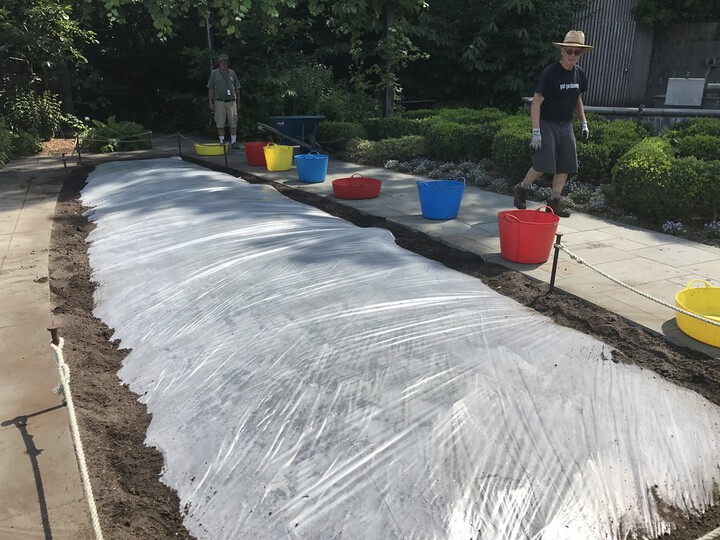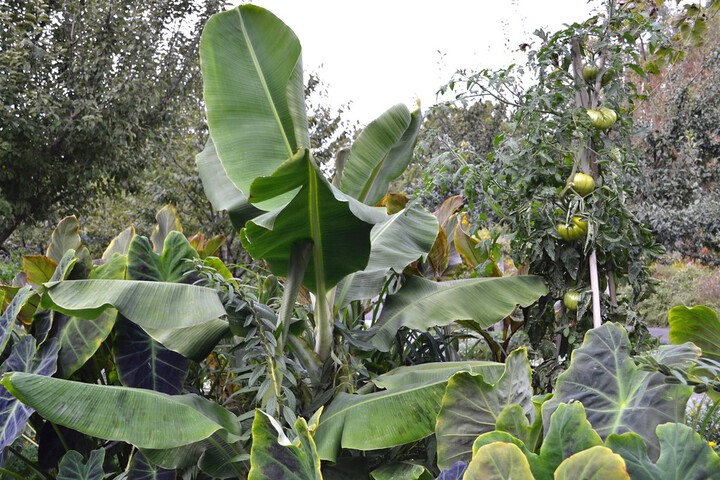You may have noticed some changes in the Herb Garden this year. Curator Maeve Turner gave us an inside look at her soil solarization experiment and crop rotation project.
After having problems with pests and disease in the Herb Garden, Turner wanted to try some different methods of organic pest management. In July, she and her team stretched two layers of thin, clear plastic over a small bed in the Herb Garden to experiment with soil solarization. This setup creates a greenhouse effect by trapping air between the layers, and the trapped energy heats the soil to temperatures that pathogens and pests in the soil cannot survive. With the season’s cooling temperatures, the experiment has come to an end, and soil samples will be tested to determine the success of the project.

Turner and her team also experimented with another horticultural practice, crop rotation—moving plants into new beds for the first time since the Herb Garden’s reopening in 2010. Not only are growing conditions improved but the plants’ new homes give the garden a fresh feel.

You’ll discover the four geographical regions represented in the garden—the northern Mediterranean; the Fertile Crescent and Sub-Saharan Africa; the Americas; and East, South, and Southeast Asia and the Pacific—have shifted. Turner also added some exciting new plants this year, including a banana plant, which you can find in the northwest corner of the Herb Garden. Be sure to take in all the changes and embark on a botanical trip around the world during your next visit.